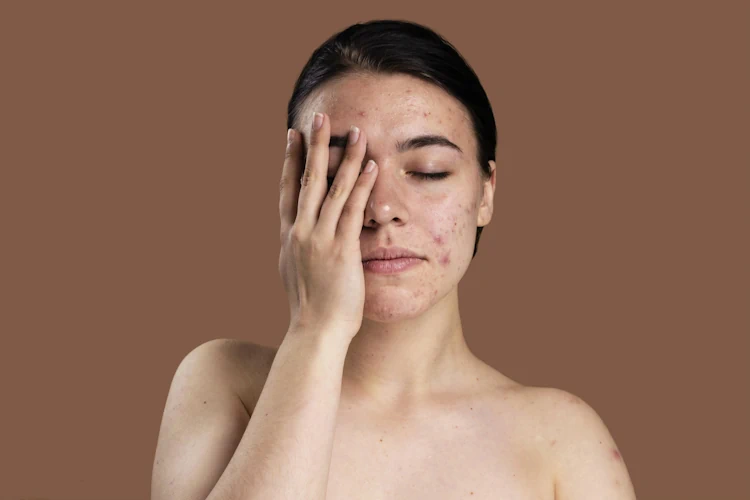Acne scars can be a significant source of insecurity for many people. While there are various treatments available, laser therapy has become increasingly popular due to its effectiveness. However, not all lasers are created equal, and understanding the differences between them can help you choose the best option for your skin. In this article, we’ll compare different types of lasers used for acne scar treatment, discussing their pros and cons, and helping you make an informed decision. You can visit klinik pakar kulit jerawat kedah for acne scar treatment.
Understanding Acne Scars and Laser Treatment
What are Acne Scars?
Acne scars are the result of damage to the skin caused by severe acne. They can take various forms, including ice pick scars, boxcar scars, rolling scars, hypertrophic scars, and atrophic scars. These scars can be challenging to treat, as they are often deep-seated and may require multiple sessions to improve their appearance. More info and treatment are available in klinik mediskin.
Laser Treatment for Acne Scars
Laser treatment for acne scars is a non-invasive procedure that uses focused beams of light to target damaged skin cells. This process helps stimulate collagen production, improve skin texture, and reduce the appearance of scars. Laser therapy can be an effective option for many people, but it’s essential to choose the right type of laser for your skin type and concerns.
Popular Types of Lasers for Acne Scar Treatment
Fractional CO2 Laser
The Fractional CO2 laser is a popular option for treating acne scars. It uses carbon dioxide lasers to deliver precise beams of light to the skin, stimulating collagen production and reducing the appearance of scars. This type of laser is often recommended for deep scars and can provide significant improvement in skin texture and tone.
Erbium Laser
The Erbium laser is another option for treating acne scars. It uses erbium-doped yttrium aluminum garnet (Er:YAG) lasers to target damaged skin cells and promote collagen production. This type of laser is less invasive than the Fractional CO2 laser and can be an excellent option for those with lighter skin tones.
Pulse Dye Laser
The Pulse Dye laser is a popular option for treating acne scars, particularly those that are red or pink in color. This type of laser uses intense, pulsed light to target the blood vessels in the skin, reducing redness and promoting healing. This can be an effective option for improving the appearance of acne scars and restoring the skin’s natural tone.
Nd:YAG Laser
The Nd:YAG laser is another option for treating acne scars. It uses neodymium-doped yttrium aluminum garnet (Nd:YAG) lasers to target damaged skin cells and promote collagen production. This type of laser is less invasive than the Fractional CO2 laser and can be an excellent option for those with darker skin tones.

How Lasers Work for Acne Scars
Laser treatment for acne scars works by targeting the damaged skin cells responsible for scarring. The laser energy is absorbed by these cells, causing them to heat up and break down. This process stimulates collagen production, which helps fill in the scars and improve the overall texture and tone of the skin.
Pros and Cons of Different Laser Types
While all lasers can be effective for treating acne scars, they each have their pros and cons. For example, the Fractional CO2 laser is more effective for deeper scars but may require a more extended recovery period. On the other hand, the Nd:YAG laser is less invasive but may not be as effective for deep scars. It’s essential to discuss your options with a dermatologist to determine the best treatment plan for your specific needs.
Choosing the Right Laser for Your Skin Type
Choosing the right laser for your skin type is crucial for achieving the best results. For example, the Fractional CO2 laser may not be suitable for those with darker skin tones, as it can cause pigmentation changes. On the other hand, the Erbium laser is a safer option for those with lighter skin tones. It’s essential to discuss your options with a dermatologist to ensure you choose the best treatment for your specific concerns.
Preparation and Recovery
Before undergoing laser treatment for acne scars, it’s essential to prepare your skin. This may involve avoiding sun exposure, stopping certain medications, and following a proper skincare routine. After the procedure, it’s essential to follow your dermatologist’s instructions for recovery, which may include applying ointments, avoiding sun exposure, and using sunscreen.
FAQs
- Is laser treatment for acne scars painful?
- Laser treatment for acne scars is generally well-tolerated, but some people may experience mild discomfort during the procedure. Your dermatologist can provide pain relief options to help make the experience more comfortable.
- How many sessions of laser treatment are needed for acne scars?
- The number of sessions needed for laser treatment of acne scars depends on the type and severity of the scars. Some people may see improvement after just one session, while others may require multiple sessions to achieve their desired results.
- How long does it take to see results from laser treatment for acne scars?
- It can take several weeks or even months to see the full results of laser treatment for acne scars. Your dermatologist can provide more information on what to expect based on your specific treatment plan.
- Are there any side effects associated with laser treatment for acne scars?
- Some people may experience temporary redness, swelling, or irritation after laser treatment for acne scars. These side effects typically subside within a few days.
- How long do the results of laser treatment for acne scars last?
- The results of laser treatment for acne scars can be long-lasting, but they may require maintenance treatments to maintain their effectiveness. Your dermatologist can provide more information on what to expect based on your specific treatment plan.